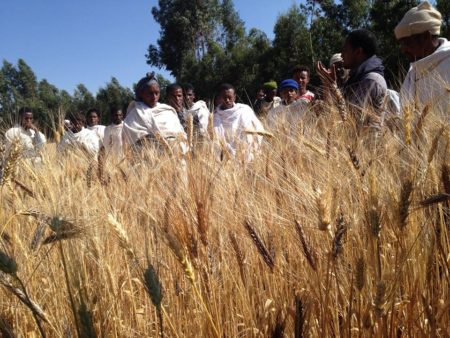I bring you a nice photo, and even nicer quote, from Salvatore Ceccarelli’s Facebook page today. Salvatore has blogged for us in the past about his work on variety mixtures.
In 2008, at ICARDA, we dusted off the old idea of evolutionary breeding to bring biodiversity back into farming systems. We made large, widely diverse populations of barley, bread wheat and durum wheat by mixing lots of F2 lines. And I mean lots: 1600 in the case of barley, 2000 in the case of bread wheat and 700 for durum wheat. The populations went to different countries, including Jordan, Algeria, Eritrea, Iran, and lately even Italy. In Ethiopia, a specific population was made based more specifically on Ethiopian germplasm.
A few days ago Salvatore was examining this particular mixture of 217 durum wheats on a farm at Geregera, in the region of Gonder, Ethiopia.

The farmer responsible for the mixture is the one at the extreme right of the photo (the guy talking, just to his left, is the student who sowed the experiment). This is how the farmer described what’s going on in his field.
In a mixture, plants are jealous of one another and try to be better than their neighbours, and the result is that the whole field is better.
And you can see what he means, although unfortunately it doesn’t seem to apply to humans.
